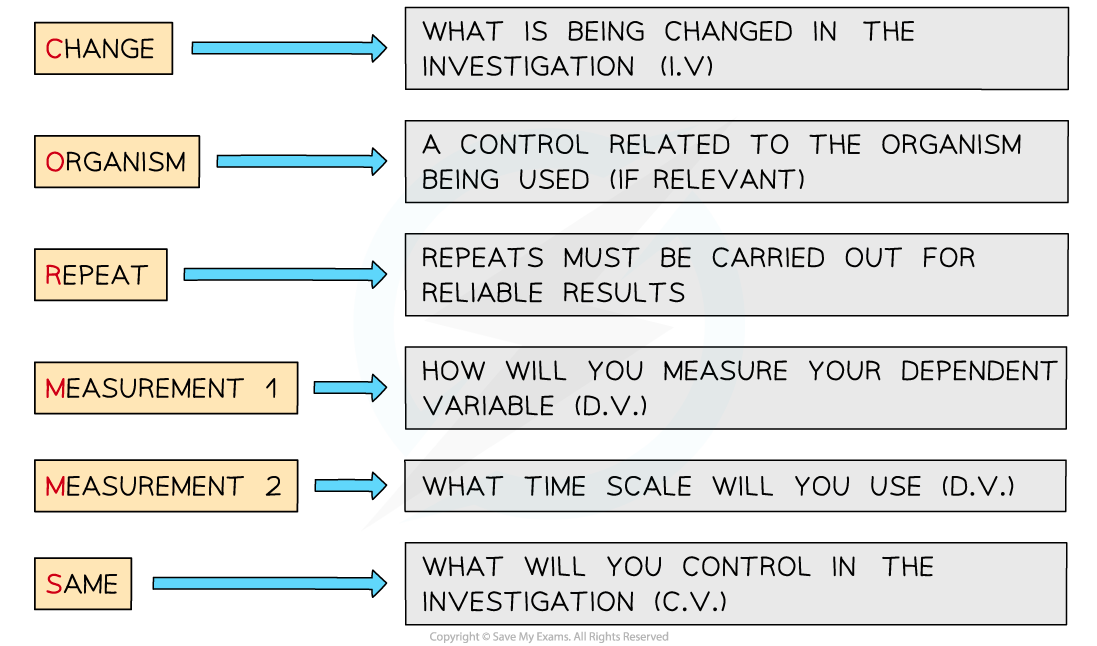Practical: Measuring Biodiversity
We can investigate biodiversity with quadrats using a similar method to the one used when investigating population size
Apparatus
- 2 tape measures
- Quadrat
- Random number generator
- Species key
Method
- Use 2 tape measures to lay out your first survey area (e.g. 10m X 10m)
- Use a random number generator to create a set of coordinates to place your first quadrat
- E.g. for coordinates 4,5, you would place your quadrat 4m along on the x-axis and 5m along on the y-axis
- Count the number of different species found within that quadrat
- Repeat this process until you have collected the data for 10 quadrats
- Repeat these steps for the second survey area



The method for how to investigate biodiversity using a quadrat
Results
- The simplest indicator of biodiversity in this investigation is simply to compare the number of different species found in each survey area
- A higher level of biodiversity would be indicated by a larger number of different species found in that area
- However, this measurement of biodiversity is very simplistic as it doesn't tell us about the distribution or population size in either survey area
- As with species abundance, the biodiversity is likely to be influenced by biotic factors such as:
- Competition
- Predator-prey relationships
- Interactions with other organisms within the food chain or food web
- Biodiversity will also be influenced by abiotic factors such as:
- Light intensity
- Mineral availability
- Water availability
- pH
- Temperature
- Salinity
Limitations
- As with the previous investigation (comparing abundance in 2 study areas), it can be easy to miss individual organisms when counting in a quadrat, especially if they are covered by a different species
- Solution: Use a pencil or stick to carefully move leaves out of the way to check if there is anything else underneath
- Identifying species or distinguishing between species may be tricky
- Solution: Use a species key to identify the species
Applying CORMS to practical work
- When working with practical investigations, remember to consider your CORMS evaluation

CORMS Evaluation
- In this investigation, your evaluation should look something like this:
- C - We are changing the study area where we are collecting the data
- O - We will count plant species each time (not animal, fungi etc)
- R - We will repeat the investigation several times to ensure reliability
- M1 - We will count the number of different plant species found across all quadrats
- M2 - this isn't really relevant in this scenario
- S - We will control the size of the quadrat, the random way that quadrats are placed on the ground, the day that the results were collected
Exam Tip
When completing an ecological study, we must ensure that the data collected is random and representative of the survey area. We do this by selecting the position of the quadrat randomly and taking a minimum of 10 readings in each survey area.

